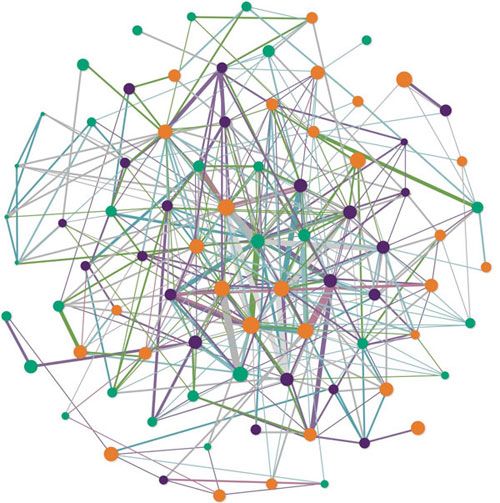Multidisciplinary Care Teams: Challenge or Opportunity?
Abigail Bernardi explains how a better understanding of connections among practitioners on care teams helps sales reps build relationships while benefitting a company’s marketing efforts.
Pharmaceutical organizations continue to operate in a fiercely competitive and volatile market. Commercial teams must meet sales goals even as blockbuster therapy patents expire, use of generics grows, regulations tighten and the political climate is fraught with uncertainty. Moreover, not every pharma company can boast an extensive sales force. Marketing and sales tools that inform and empower sales representatives to conduct effective physician outreach remain as important as ever.
Reaching the right prospects
Identifying and educating relevant physicians about new or existing therapies is a lynchpin of a pharma company’s commercial success. This requires a thorough knowledge of target physicians on the part of the company’s sales reps. The better they know their customers and prospects, the better they can forge strong relationships and share timely, pertinent information to contribute to patient treatment and education. Getting such level of intelligence is particularly challenging when multidisciplinary care teams are involved to treat cancer and other complex diseases that require multimodal therapy.
From a single physician to care teams-a new take on the influence network
Influence maps have generally focused on individual providers or pairs of providers connected via referrals; however, commercial teams in pharma are often dealing with whole teams where multiple providers are contributing to the treatment plan of a single patient. These dynamics are difficult to uncover in a network with a linear focus.
For example, cancer is a complicated disease with multiple treatment paths and often includes team-based care. Each provider on the team has a specific role. While some oncologists and technicians may be involved in the diagnosis, other specialists may get involved to treat certain aspects of the disease as it progresses, or care for patients’ physical and emotional needs.
In these instances, it may not be apparent how cancer patients are managed throughout their healthcare journey: during the diagnosis, treatment and post-treatment stages. Nor is it always clear who makes decisions for specific therapies. Sales reps need a horizontal view – across the specialists – so that they can identify treatment teams. They need answers to questions such as:
• What specialists are involved in making treatment decisions?
• Which physicians oversee the most patients, across the most teams?
• Who are the thought leaders in a particular therapeutic area?
• Which physicians are consistently working together on similar cases?
It is such deep insights into providers and their care teams that allow reps to speak from a position of knowledge when describing how their products fit into care models.
Getting the answers
Medical claims based analytics solutions can take physicians identified through diagnoses and procedure codes and provide insight into how many patients they collectively have in common relative to others practicing in the same market. This is achieved using longitudinal patient tracking via a de-identified patient key.

Figure 1: A network map of providers (represented by dots) illustrating how they are connected (represented by lines) allows pharma organizations to see which providers have the most connections and their shared patient volume. Providers in the center with the darkest lines have the most connections and the greatest shared volume, helping sales reps to focus on quality over quantity.
The resulting networks help enable pharma organizations to understand referral patterns and patient flow, uncover high-volume provider relationships, discover thought leaders, identify all members of the patient care team, and better understand a patient’s healthcare journey.
Putting data to work
Seeing the connections among providers and using that knowledge in sales strategies and conversations with prospects will help teams boost commercial effectiveness and performance in the following three ways:
1. Identify the most influential physicians who serve on multiple teams and treat the largest volume of patients.
2. Further refine existing targeting and segmentation strategies to maximize the return on investment around sales and marketing activities. A more granular insight into the market helps commercial teams to hone in on and invest time in the most influential physician prospects.
3. Educate sales reps by giving them a picture of top providers in the market and their connections to other providers. This helps streamline field work and reduce time spent onboarding new reps.
4. Prepare the right messages for conversations with all providers involved in the care of the patient to help streamline treatment decision making and improve patient outcomes.
A better understanding of connections among practitioners on care teams is instrumental in helping sales reps build relationships while benefitting the company’s market research, marketing and sales efforts.
Abigail Bernardi is Director Market Planning, LexisNexis Risk Solutions - Health Care.
The Misinformation Maze: Navigating Public Health in the Digital Age
March 11th 2025Jennifer Butler, chief commercial officer of Pleio, discusses misinformation's threat to public health, where patients are turning for trustworthy health information, the industry's pivot to peer-to-patient strategies to educate patients, and more.
Navigating Distrust: Pharma in the Age of Social Media
February 18th 2025Ian Baer, Founder and CEO of Sooth, discusses how the growing distrust in social media will impact industry marketing strategies and the relationships between pharmaceutical companies and the patients they aim to serve. He also explains dark social, how to combat misinformation, closing the trust gap, and more.